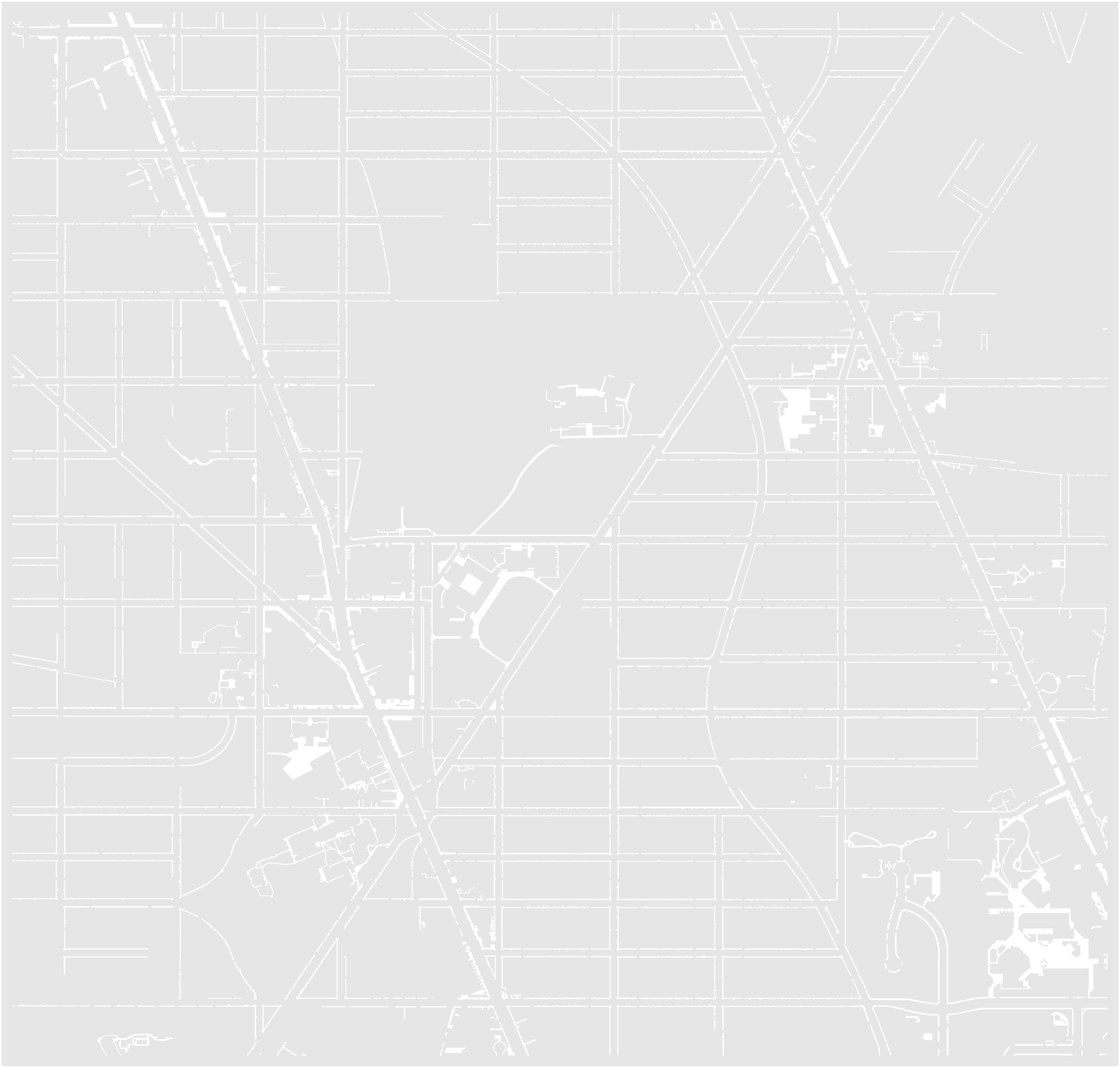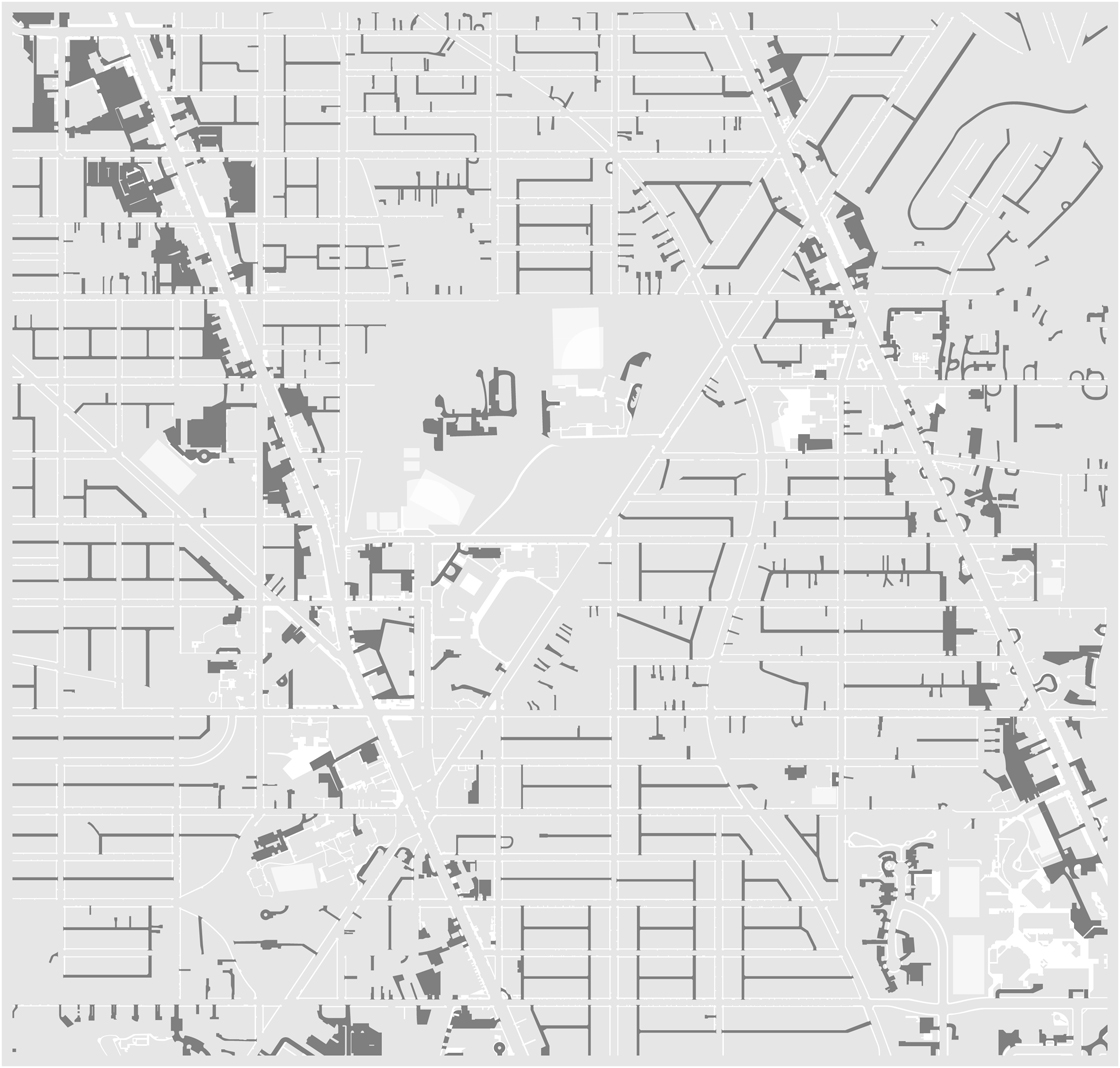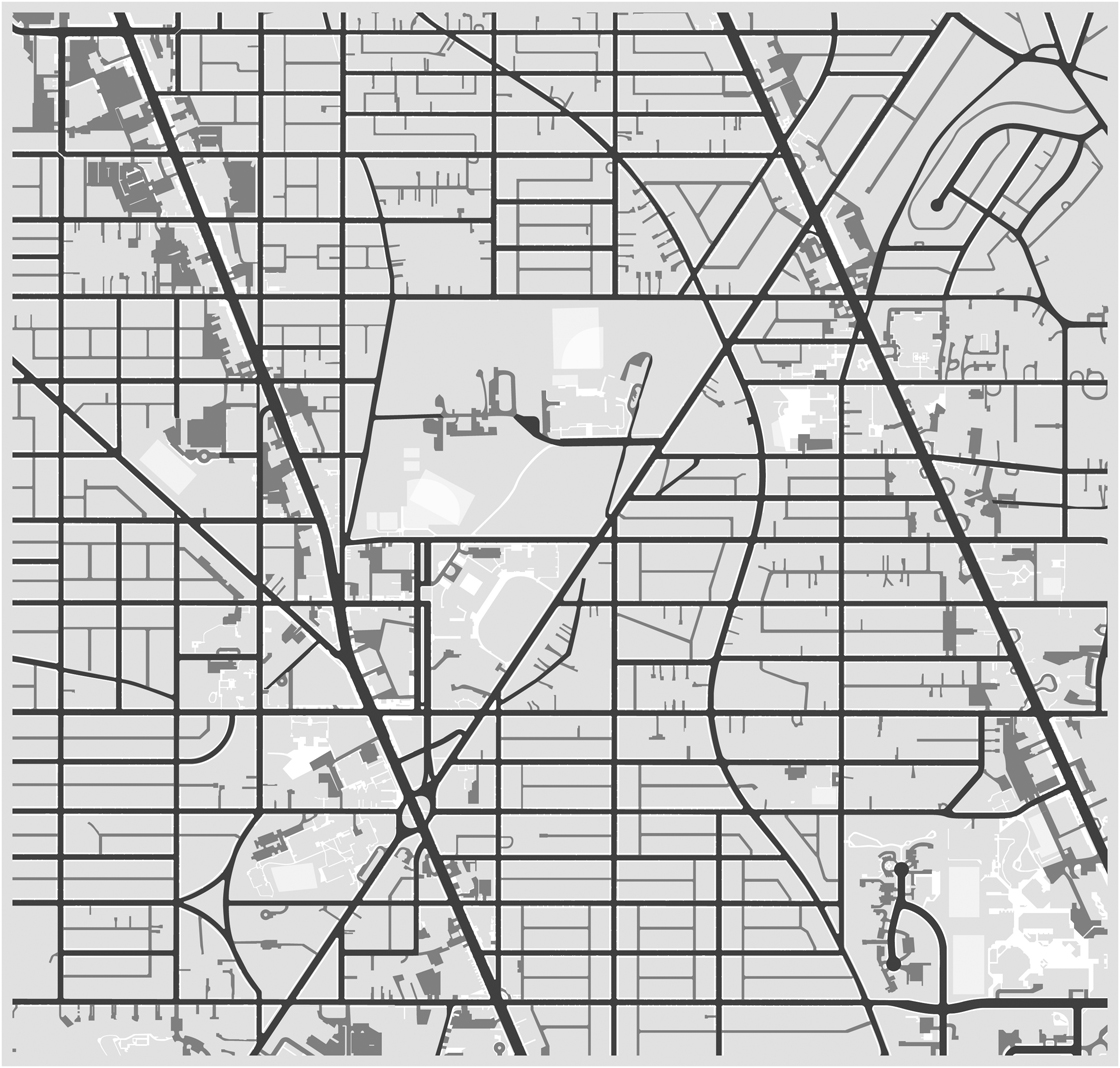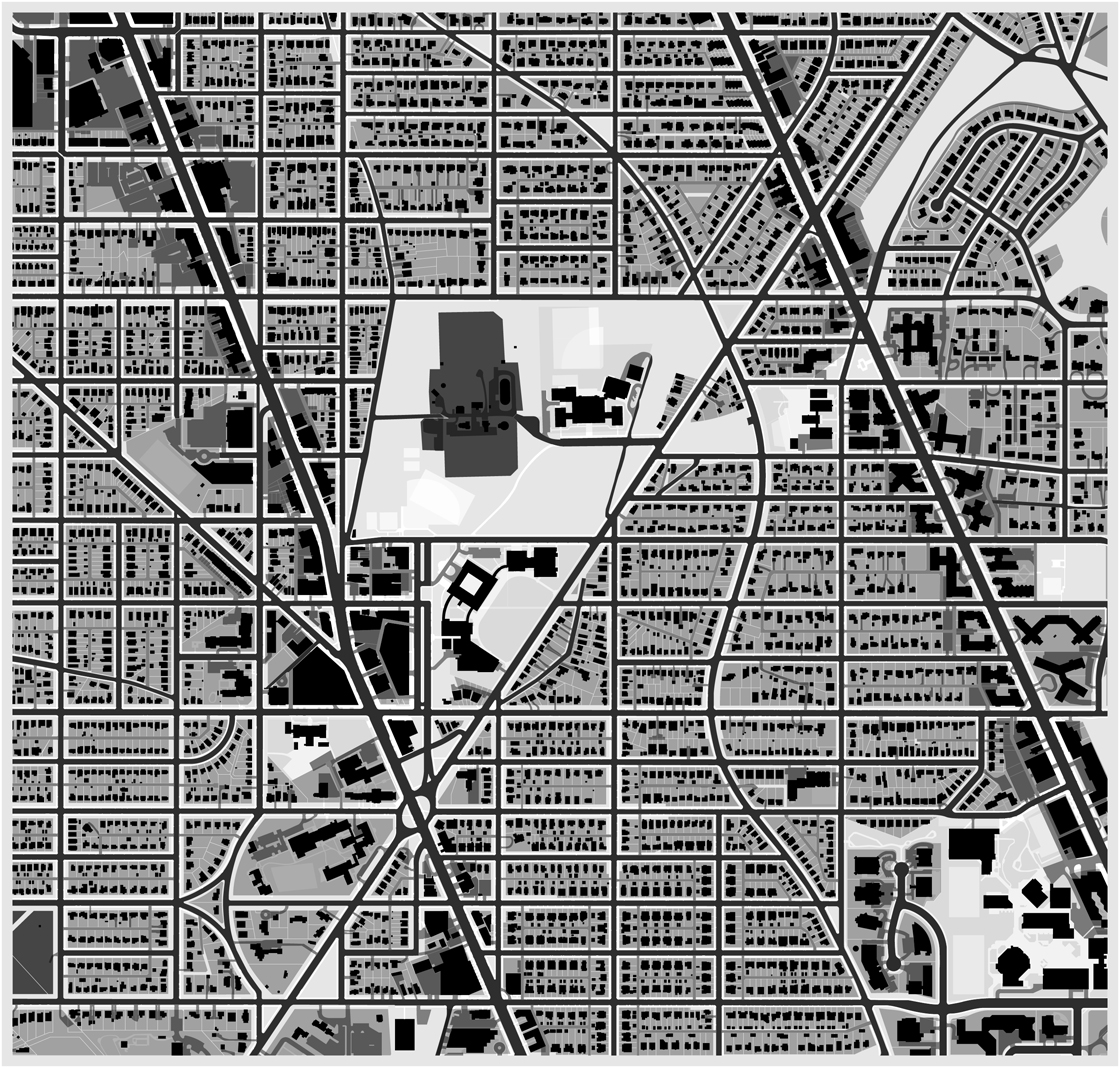I wrote in the last update that any analysis of the spatial relationships of a suburban-style city needs to consider the legal rules and social sentiments that coexist with physical boundaries. Of course the laws vary based on your “mode” of travel, with pedestrians getting a bit of leeway in terms of “travel.”
But let’s do pedestrians. How do they interact with space?
Well, there’s grass. Grass or dirt is physically welcoming and comfortable, but the fear of dirtiness and wetness keeps most people off it when dressed up. Otherwise, residents seem less interested in walking on it when a path is available. So let’s say it’s 95% walkable. It’s a little subjective, but good enough for a general sense of the area.
That is one hell of a fascinating map isn’t it? Now, pedestrian walkways, etc. These are safe, certain, and legal places to walk. Most people do their perambulation on designated spaces, and I’ll say it’s 100% walkable.
The slight difference already preferences some spaces over others. Now, if we add in all the other places pedestrians have some right to, it gets much messier. Playing fields, tennis courts, and other similar places invite people on foot, but not when games are on. Let’s call them 97% walkable. Then, alleys and parking lots act a lot like shared spaces, with automobiles and pedestrians playing together most of the time, as guaranteed by law. But they’re ugly and messy, and seen as less safe. 50% walkable.
Now, for the roads. Here, vehicular traffic has legal and social preference. Save the fear of injuring someone, cars and trucks get precedence, and fairly so. But, it’s not physically impossible to enter the road and jaywalking is socially permitted, if illegal. It’s also a public space, so citizens might sense entitlement to the space. So, 10% walkable.
Now it’s just kind of looking like the city, but it’s not feeling like space. There is something missing: property delineations. Property is a funny thing; without physical boundaries, the laws mostly exist through the good civics of residents. But there’s a sense of non-ownership that most people feel. At the same time, there’s nothing really stopping a carefree or brazen individual from entering a front yard. They could just do it… property reduces walkability by 20%, for the sake of argument. Except for the two reservoirs with barbed wire – I give them a 60% reduction.
But most of these conditions are mostly legal. The experience of space is mostly dominated by the buildings, right? Sort of. Buildings offer a near-certain physical and visual separation that none of the other conditions offer. A person knows that walking (or breaking) into stranger’s house is very transgressive, violent, and requires a very specific intent. Let’s call “building” 0% walkable; it’s private and obdurate in opposing access.
So, for a pedestrian, the shape of space is quite uncertain. The strong, clear definitions of the Nolli Plan do not influence the perception of space in a law-abiding citizen as much as they would in the traditional city. Instead, spaces of powerful ambiguity interact with pedestrians. The haven of the sidewalks disappears amid the bland confusion of the other conditions, which equally diminish the already vague influence of buildings.
While this is fine in concept, I find the disconnect between legal restrictions and physical ones very uncomfortable – when not committed to violating laws and scruples. Whether this ambiguity can be productive, rather than just obnoxious, will be an issue examined in the design of the neighborhood and park, but first, it’s helpful to look at three other modes of experience.






1 thought on “Reno Park Update 091021: Pedestrian’s Perception”